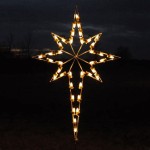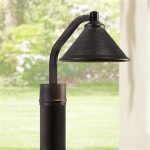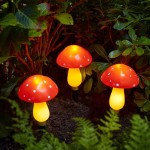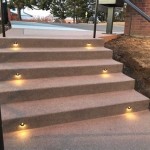How To Wire Outdoor LED Lights: A Comprehensive Guide
Wiring outdoor LED lights involves careful planning and execution to ensure both functionality and safety. This process extends beyond simply connecting wires; it requires understanding electrical codes, choosing appropriate materials, and implementing secure, weather-resistant connections. Neglecting any of these aspects can lead to electrical hazards, equipment damage, and inefficient lighting.
Before commencing any electrical work, it is paramount to disconnect the power supply at the main breaker. This precaution minimizes the risk of electrical shock. Verify the circuit is de-energized using a non-contact voltage tester before proceeding. Adherence to local electrical codes is also crucial. These codes dictate the permitted wiring methods, burial depths for underground cables, and the use of approved materials for outdoor applications. Familiarizing oneself with these regulations prior to starting the project ensures compliance and avoids potential fines or safety violations.
The selection of appropriate wiring and connectors is critical for long-term performance and safety. Outdoor environments expose electrical components to moisture, temperature fluctuations, and physical stress. Therefore, wiring and connectors must be specifically designed for outdoor use. Underground wiring requires direct burial cable, designated as UF (Underground Feeder) cable. This cable is encased in a durable, moisture-resistant jacket that protects the conductors from ground contaminants. For above-ground applications, THHN (Thermoplastic High Heat-resistant Nylon) wire installed within a conduit offers protection from the elements and physical damage. Connectors used outdoors must be weatherproof, typically featuring rubber seals or gel-filled insulation to prevent moisture ingress. Wire gauge selection depends on the amperage draw of the LED lights and the distance of the run. Consult a voltage drop calculator to determine the appropriate gauge to minimize voltage loss, ensuring optimal light output.
Key Point 1: Planning and Preparation
Effective planning forms the foundation of a successful outdoor lighting project. This involves mapping out the locations of the lights, considering the intended purpose and aesthetic appeal. Factors such as the size of the area to be illuminated, the desired light intensity, and the architectural features of the surroundings should influence the placement of the lights. Determine the power source location and the routing of the wiring. Evaluate the potential for obstructions, such as trees, landscaping, or underground utilities, that may impact the installation process. A detailed plan helps to minimize errors, reduces the need for rework, and ensures a professional-looking result.
Once the lighting layout is finalized, calculate the total wattage of the LED lights to determine the required circuit amperage. Ensure that the existing circuit can handle the additional load. If the existing circuit is insufficient, a new circuit may need to be installed. This requires a qualified electrician to perform the work safely and in accordance with electrical codes. Gather all necessary materials, including the LED lights, wiring, connectors, conduit (if required), junction boxes, and mounting hardware. Having all the tools and materials readily available streamlines the installation process and minimizes delays.
Preparing the site involves digging trenches for underground wiring, attaching mounting brackets for surface-mounted lights, and ensuring that all surfaces are clean and ready for installation. If trenching is required, check for underground utilities before digging. Contacting the local utility company to mark the locations of underground lines prevents accidental damage and potential safety hazards. When running conduit, ensure that it is properly secured to prevent movement and damage. Proper site preparation contributes to a smooth and efficient installation process.
Key Point 2: Wiring Techniques and Connections
Proper wiring techniques are essential for creating reliable and safe electrical connections. When working with electrical wiring, always strip the insulation carefully to avoid nicking or damaging the conductors. Damaged conductors can lead to overheating and potential fire hazards. Use a wire stripper tool to remove the insulation cleanly and consistently. When connecting wires, use appropriate wire connectors, such as wire nuts or crimp connectors. These connectors provide a secure and insulated connection that prevents wires from coming loose. Ensure that the connectors are properly sized for the gauge of the wires being connected.
For outdoor applications, weatherproof connectors are crucial. These connectors are designed to prevent moisture from entering the connection, which can cause corrosion and electrical shorts. Gel-filled connectors provide an extra layer of protection against moisture. When using wire nuts, apply a dielectric grease to the wires to further repel moisture. Ensure that the wire nuts are twisted tightly to create a secure connection. Wrap the connection with electrical tape for added insulation and protection. For direct burial applications, use direct burial connectors that are specifically designed for underground use. These connectors are sealed to prevent moisture penetration.
When wiring LED lights, pay attention to the polarity. LED lights are polarity sensitive, meaning that they must be connected with the correct positive (+) and negative (-) terminals. Incorrect polarity can prevent the lights from working or even damage them. Refer to the manufacturer's instructions to determine the correct polarity for the LED lights. Most LED lights have markings indicating the positive and negative terminals. Use a multimeter to verify the polarity of the wiring before connecting the lights. Double-check all connections to ensure that they are secure and properly insulated. A thorough inspection helps to prevent electrical problems and ensures the long-term performance of the lighting system.
Key Point 3: Safety and Best Practices
Safety should be the paramount concern throughout the entire wiring process. Always disconnect the power supply at the main breaker before commencing any electrical work. This is the most important safety precaution to prevent electrical shock. Wear appropriate personal protective equipment (PPE), such as insulated gloves and safety glasses. Insulated gloves protect against electrical shock, while safety glasses protect the eyes from debris. Avoid working in wet conditions, as water can conduct electricity and increase the risk of electrical shock. If working outdoors in damp conditions, use a ground fault circuit interrupter (GFCI) outlet to further protect against electrical shock.
When working with ladders or scaffolding, ensure that they are stable and properly positioned. Follow the manufacturer's instructions for safe usage. Avoid overreaching or leaning to prevent falls. Use a spotter to assist with ladder work, especially when working at heights. Keep the work area clean and organized to prevent tripping hazards. Clean up any debris or tools that could pose a safety risk. Provide adequate lighting to ensure good visibility, especially when working in dimly lit areas.
After completing the wiring, thoroughly inspect all connections to ensure that they are secure and properly insulated. Use a non-contact voltage tester to verify that the wiring is properly grounded. Test the LED lights to ensure that they are working correctly. If any problems are detected, troubleshoot the wiring to identify and correct the issue. Document the wiring layout and connections for future reference. This documentation can be helpful for troubleshooting or making modifications to the lighting system in the future. Consider having a qualified electrician inspect the wiring to ensure that it is compliant with electrical codes and safe for use. Regular maintenance of the outdoor lighting system, including inspecting connections and replacing damaged components, helps to ensure long-term performance and safety.
Following these guidelines for how to wire outdoor LED lights will help achieve a safe, functional, and aesthetically pleasing outdoor lighting system. Remember to prioritize safety, adhere to local electrical codes, and use appropriate materials for outdoor applications. Careful planning, proper wiring techniques, and thorough inspection are critical for a successful and long-lasting lighting installation.

Outdoor Led Lighting Install

How To Install Outdoor Led Lighting This Old House

Step By Guide Installing Outdoor Lighting Around Your Home Govee

Led Security Lights The Ultimate Guide To Home Safety

Armacost Lighting 12 In 2 Pin Ip67 Outdoor Led Wire Lead Strip Connector Cord Pack 560621 The Home Depot

Outdoor And Backyard Lighting We Love Reviews By Wirecutter

5 Conductor Outdoor And Underwater Wire For Low Voltage Led Lighting

How To Install Garden Lighting Everything You Need Know

Good Earth Lighting Indoor Outdoor Smart Wi Fi Strip Light

Pro Led Outdoor Landscape Lighting Kit Four Spot Lights 40watt Power Pack Photocell Timer 80 Foot Cable







